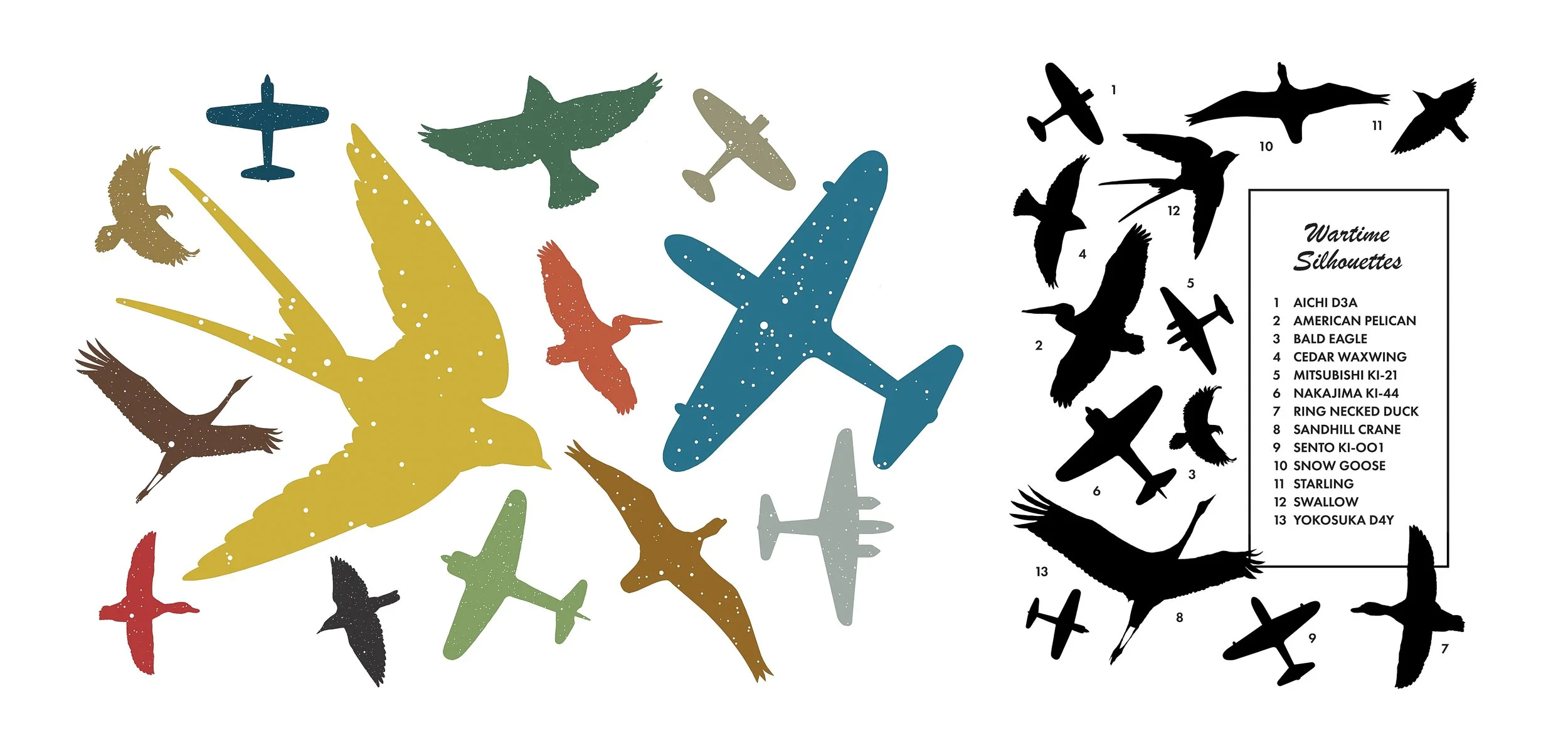Installation at OS Projects, Racine, WI
Friend or Foe, 2022
In the Spring of 1942, after the signing of Executive Order 9066 by President Franklin Delano Roosevelt, 120,000 Japanese Americans were forced to leave their homes on the West Coast of the United States. The places where they sent were purposefully situated in desolate locations. Someone born and raised in San Diego could suddenly be incarcerated in rural Wyoming or Arkansas. An immigrant from Japan, having lived in Portland for 40 years, could find themselves in an Arizona desert.
My family’s forced migration began in Tacoma, Washington and included time in Pinedale, California, Newell, California and Powell, Wyoming. Newell, the high desert location of the camp known as Tule Lake, was located on a prominent migratory bird path, with a large variety of species flying overhead. I can’t help but to think that those birds, as foreign to the Japanese Americans as the landscape, made an impression, representing similar notions of migration - but with the elusive element of freedom. At the same time, patriotic citizens on the West Coast were watching the skies for Japanese war planes.
The identification chart references A Field Guide to Western Birds (1941) by Roger Tory Peterson. The pattern on the plane silhouettes is the night sky over Tacoma, Washington on December 7, 1941. The pattern on the bird silhouettes is the night sky over Newell, California on July 20, 1942, the first night of incarceration for my father at Tule Lake.
The installation of the work can take many forms. For a current exhibition at OS Projects, I’ve installed vinyl birds and planes, varying in size from 8 to 36” in diameter, to the large gallery windows.

